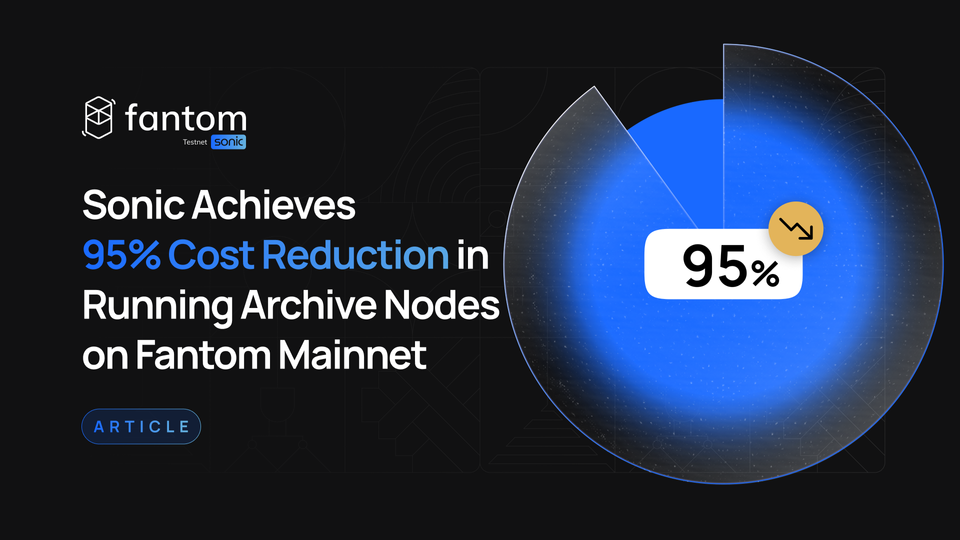Sonic Mainnet Launch and Performance Comparison
As we prepare to launch the Sonic mainnet in the coming weeks, we continue to put the tech stack through its testing paces and are thrilled to share some initial performance comparisons between the Sonic archive nodes and our existing Opera archive nodes.
On February 7, 2024, we upgraded some of the Foundation’s archive (RPC) nodes to Sonic on the current Fantom mainnet and saw a 95% reduction in costs for running large-scale archive nodes (a 20x improvement in cost efficiency). Click here for more information on archive nodes.
Sonic Archive Node Performance Results
To showcase the improvements that Sonic technology brings to archive nodes, we focused on three metrics: storage usage, synchronization time, and request capacity.
Storage Usage
Sonic archive nodes use only one-third of the disk space than Opera nodes. In initial testing, we saw a 90% reduction in disk space usage utilizing a flat storage system but opted for a new variant of a Merkle Patricia Trie database that delivers additional speed, has inbuilt live pruning, is fully compatible with Fantom’s mainnet, and supports future developments including sharding/horizontal scaling.
Synchronization Time
Sonic archive nodes synchronize data approximately 10x faster than Opera nodes on the Fantom mainnet. To put this advancement into perspective, it took 8 days for Sonic to sync from the beginning vs. 76 days for Opera.
Request Capacity
Sonic archive nodes can handle approximately 9x more requests per second than the Opera nodes on similar hardware. The number of RPC requests processed per second on a 20-thread server setup was:
- 10,224 for Sonic
- 1,124 for Opera
Combined, providers running RPC services can expect a 95% drop in costs (a 20x improvement in cost efficiency) with multiple archive nodes.
Next Steps
The next step in our Sonic mainnet testing is to launch a single Fantom mainnet validator running on Sonic technology, and we’re eager to share those results as well.


